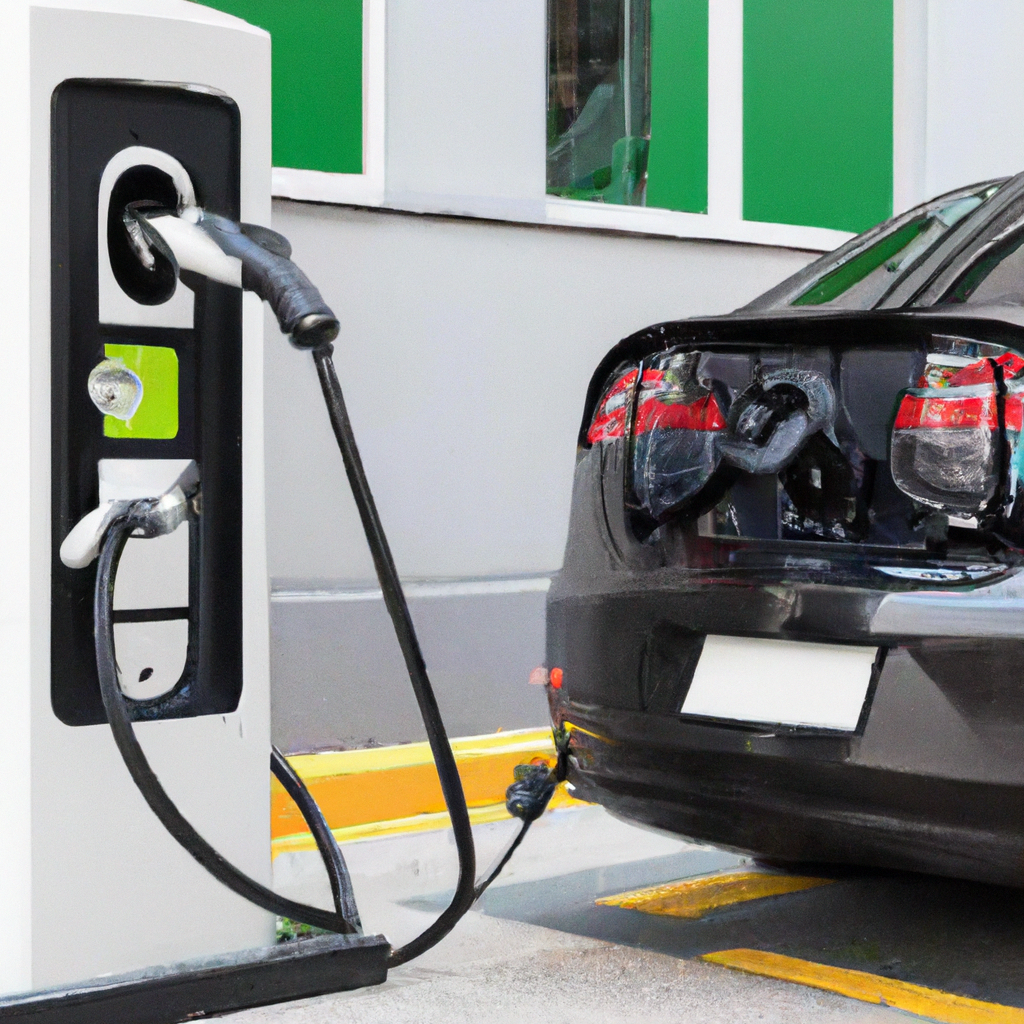The Second Life Of EV Batteries: Recycling And Repurposing
October 7, 2023 | by Jacob Kang

Imagine a world where the batteries from electric vehicles (EVs) never go to waste. Instead of ending up in landfills, these batteries are given a second chance at usefulness through recycling and repurposing. This article will explore the fascinating concept of extending the lifespan of EV batteries and the various ways they can be reused. From powering homes and businesses to providing backup energy storage, the possibilities are endless. Join us as we delve into the innovative world of recycling and repurposing EV batteries, where sustainability meets creativity.
Introduction
Welcome to the world of electric vehicles (EVs), where the future is green and sustainable. As you embrace this eco-conscious mode of transportation, it’s essential to understand the importance of recycling EV batteries. In this article, we will explore the environmental impact of EV batteries, the battery recycling process, battery repurposing, emerging technologies, challenges, and the future outlook. So, let’s dive in and discover how you can make a difference in the world of EVs.
1. Importance of Recycling EV Batteries
1.1 Environmental Impact of EV Batteries
EV batteries use various materials such as lithium, cobalt, nickel, and manganese. While these materials are crucial for powering the vehicles, their extraction and disposal can have significant environmental consequences. Through the recycling of EV batteries, we can minimize these impacts by reducing the need for new raw materials and preventing the release of harmful substances into the environment. Recycling ensures that valuable resources are not wasted and mitigates the ecological footprint of EVs, contributing to a cleaner and greener planet for future generations.
1.2 Resource Conservation and Energy Efficiency
By recycling EV batteries, we conserve valuable resources like lithium and cobalt, which are in limited supply. These resources can be extracted from discarded batteries and reused in the production of new batteries, reducing the demand for new mining activities. Additionally, recycling batteries promotes energy efficiency by reducing the energy required for raw material extraction and manufacturing processes. It also minimizes greenhouse gas emissions associated with new battery production, making the entire lifecycle of EVs more sustainable.

2. Battery Recycling Process
2.1 Collection and Sorting
The first step in the battery recycling process is the collection and sorting of used batteries. Various collection programs and initiatives are in place to ensure that batteries are properly disposed of and sent for recycling. Sorting facilities separate batteries based on their chemistry and size, preparing them for further processing.
2.2 Battery Disassembly
Once sorted, the batteries undergo disassembly, where they are carefully taken apart. This step involves removing the outer casing and separating the individual battery cells from the modules. Disassembly is a labor-intensive process that requires skilled technicians to handle the batteries safely.
2.3 Chemical Recovery
After disassembly, the battery cells undergo chemical recovery to extract valuable materials. This is often done through a hydrometallurgical process, where the cells are subjected to chemical reactions, leaching, and filtration to recover substances like lithium, cobalt, and nickel. These recovered materials can be purified and reused in the production of new batteries.
2.4 Material Separation and Refining
Following chemical recovery, the materials go through a separation and refining process. This step involves further purification to remove impurities and obtain high-quality materials. Separation technologies such as solvent extraction and electrolysis are used to separate individual elements, ensuring their suitability for reuse.
2.5 Environmental Considerations
Throughout the battery recycling process, environmental considerations are paramount. Measures are taken to minimize any potential releases of toxic substances, such as the installation of efficient air filtration systems and the utilization of closed-loop systems. Recycling facilities also adhere to strict regulations and standards to ensure the protection of the environment and the health of workers.
3. Battery Repurposing: Giving Batteries a Second Life
3.1 Second Life Applications of EV Batteries
Battery repurposing offers an excellent opportunity to extend the lifespan of EV batteries beyond their primary use. These batteries, although no longer suitable for powering vehicles, can still store significant amounts of energy. In their second life, they can be used for various applications such as energy storage for renewable sources, off-grid power systems, or even as backup power in homes and businesses. Repurposing allows for the utilization of these batteries’ remaining capacity, minimizing waste and maximizing their potential.
3.2 Benefits of Battery Repurposing
Repurposing EV batteries brings several advantages, both environmentally and economically. By employing these batteries in various energy storage applications, we reduce the demand for new battery production, further conserving resources. Additionally, repurposing is often a more cost-effective option compared to traditional energy storage systems since repurposed batteries are typically available at a lower cost. This affordability incentivizes the adoption of renewable energy technologies and promotes a more sustainable energy landscape.

4. Emerging Technologies for Battery Recycling and Repurposing
4.1 Hydrometallurgical Processes
Hydrometallurgical processes play a vital role in battery recycling. These processes utilize chemical reactions in liquid solutions to extract and recover valuable metals from battery cells. Continuous advancements in hydrometallurgical technologies enable more efficient and cost-effective recycling methods, enhancing the overall sustainability of EV batteries.
4.2 Pyrometallurgical Processes
Pyrometallurgical processes involve the use of high temperatures to decompose battery cells and recover valuable metals. These processes typically rely on the controlled combustion of batteries at elevated temperatures, allowing for the separation and recovery of metals in their molten form. Pyrometallurgical recycling methods offer an efficient and economically viable solution for handling larger volumes of batteries.
4.3 Direct Recycling Methods
Direct recycling methods aim to recover battery materials without the need for extensive disassembly or chemical processing. These methods involve shredding the batteries into small pieces and using mechanical separation techniques to separate the various components. Direct recycling approaches are gaining attention as they offer potential cost and energy savings, paving the way for more streamlined recycling processes.
4.4 Repurposing Innovations
With advancing technologies, innovative solutions for battery repurposing are emerging. These include the development of modular battery systems where individual cells can be easily replaced or repurposed. Additionally, smart battery management systems enable efficient repurposing by identifying cells with different capacities and grouping them accordingly. Such innovations enhance the viability and scalability of battery repurposing, ensuring a sustainable second life for these batteries.
5. Challenges and Limitations
5.1 Safety Concerns
The handling and recycling of EV batteries present safety concerns due to the potentially hazardous materials they contain. Measures are taken to ensure that workers and the environment are protected from exposure to these substances. Proper training, safety protocols, and regulatory compliance are crucial for addressing these concerns and minimizing risks associated with battery recycling and repurposing.
5.2 Cost Considerations
The costs associated with battery recycling and repurposing can be a significant limitation. The initial investment required for recycling facilities, as well as the complex processing techniques, can pose financial challenges. However, as the demand for battery recycling increases and economies of scale are realized, these costs are likely to decrease, making recycling and repurposing more economically viable in the long run.
5.3 Regulation and Policy Frameworks
Establishing effective regulations and policy frameworks is essential to promote and support battery recycling and repurposing initiatives. Governments and industry organizations play a pivotal role in setting standards, incentivizing recycling practices, and ensuring compliance. Well-defined regulations and supportive policies encourage the adoption of sustainable practices and create a level playing field for participants in the battery recycling and repurposing industry.

6. Future Outlook
As the popularity of EVs continues to soar, the need for battery recycling and repurposing will become even more critical. Advancements in technology, coupled with increasing awareness of environmental sustainability, are driving the development of innovative solutions for battery end-of-life management. The future holds promising possibilities, with improved recycling techniques, more efficient repurposing methods, and a supportive regulatory framework. By harnessing these advancements, we can create a sustainable circular economy for EV batteries, minimizing waste, conserving resources, and building a greener future.
In conclusion, the second life of EV batteries through recycling and repurposing is crucial in ensuring a sustainable future for electric vehicles. By understanding the environmental impact of EV batteries, the battery recycling process, and the many benefits of repurposing, you can actively contribute to minimizing waste and conserving valuable resources. With emerging technologies and a focus on addressing challenges, the future outlook for battery end-of-life management is bright. So, join the movement and make a difference in the world of EVs by embracing the second life of batteries.
RELATED POSTS
View all


